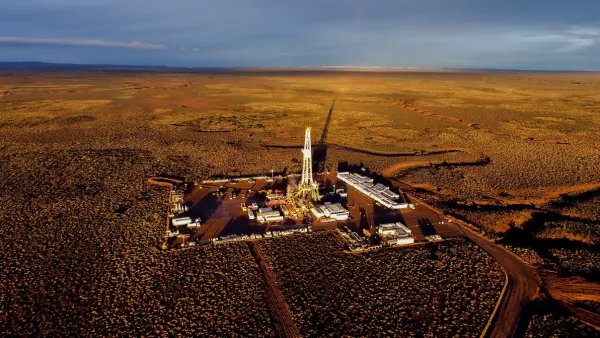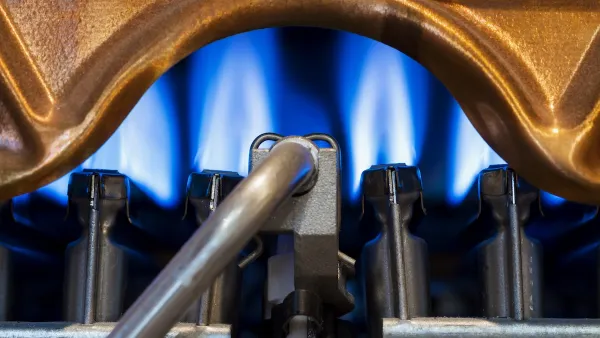Self-reported respiratory problems and skin irritations were significantly greater for those living near natural gas fracking wells in southwestern Pennsylvania than those living more than two kilometers away, according to a Yale University survey.
"People living near natural-gas wells were more than twice as likely to report upper-respiratory and skin problems than those farther away," writes Wendy Koch of USA TODAY on the study published Wednesday [Sept.10] in Environmental Health Perspectives.
"This is the largest study to look at the overall health of people living near the wells," says lead author and University of Washington environmental health professor Peter Rabinowitz, who did the research while at Yale. The study focused on Washington County, part of the Marcellus Shale where hydraulic fracturing, or fracking, is widely used to extract natural gas.
The findings don't "prove that the wells caused their symptoms, say Rabinowitz, adding more research is needed," notes Koch, adding that "(p)rior peer-reviewed studies have linked fracking to possible birth defects, higher lung disease risks, methane contamination in drinking water and elevated endocrine-disrupting chemical activity in groundwater."
However, according to a July report [PDF] by the American Petroleum Institute, "(t)here are zero confirmed cases of groundwater contamination connected to the fracturing operation in 1 million wells hydraulically fractured over the past 60 years," writes Koch.
That report notes that "(h)ydraulic fracturing has been used in the oil and natural gas industry since the 1940s." What's relatively recent is the application of horizontal drilling.
[Hat tip to Alex Guillén of Politico Morning Energy, Sept. 10 edition]
FULL STORY: People near 'fracking' wells report health woes

National Parks Layoffs Will Cause Communities to Lose Billions
Thousands of essential park workers were laid off this week, just before the busy spring break season.

Retro-silient?: America’s First “Eco-burb,” The Woodlands Turns 50
A master-planned community north of Houston offers lessons on green infrastructure and resilient design, but falls short of its founder’s lofty affordability and walkability goals.

Delivering for America Plan Will Downgrade Mail Service in at Least 49.5 Percent of Zip Codes
Republican and Democrat lawmakers criticize the plan for its disproportionate negative impact on rural communities.

Test News Post 1
This is a summary

Test News Headline 46
Test for the image on the front page.

Balancing Bombs and Butterflies: How the National Guard Protects a Rare Species
The National Guard at Fort Indiantown Gap uses GIS technology and land management strategies to balance military training with conservation efforts, ensuring the survival of the rare eastern regal fritillary butterfly.
Urban Design for Planners 1: Software Tools
This six-course series explores essential urban design concepts using open source software and equips planners with the tools they need to participate fully in the urban design process.
Planning for Universal Design
Learn the tools for implementing Universal Design in planning regulations.
EMC Planning Group, Inc.
Planetizen
Planetizen
Mpact (formerly Rail~Volution)
Great Falls Development Authority, Inc.
HUDs Office of Policy Development and Research
NYU Wagner Graduate School of Public Service




























